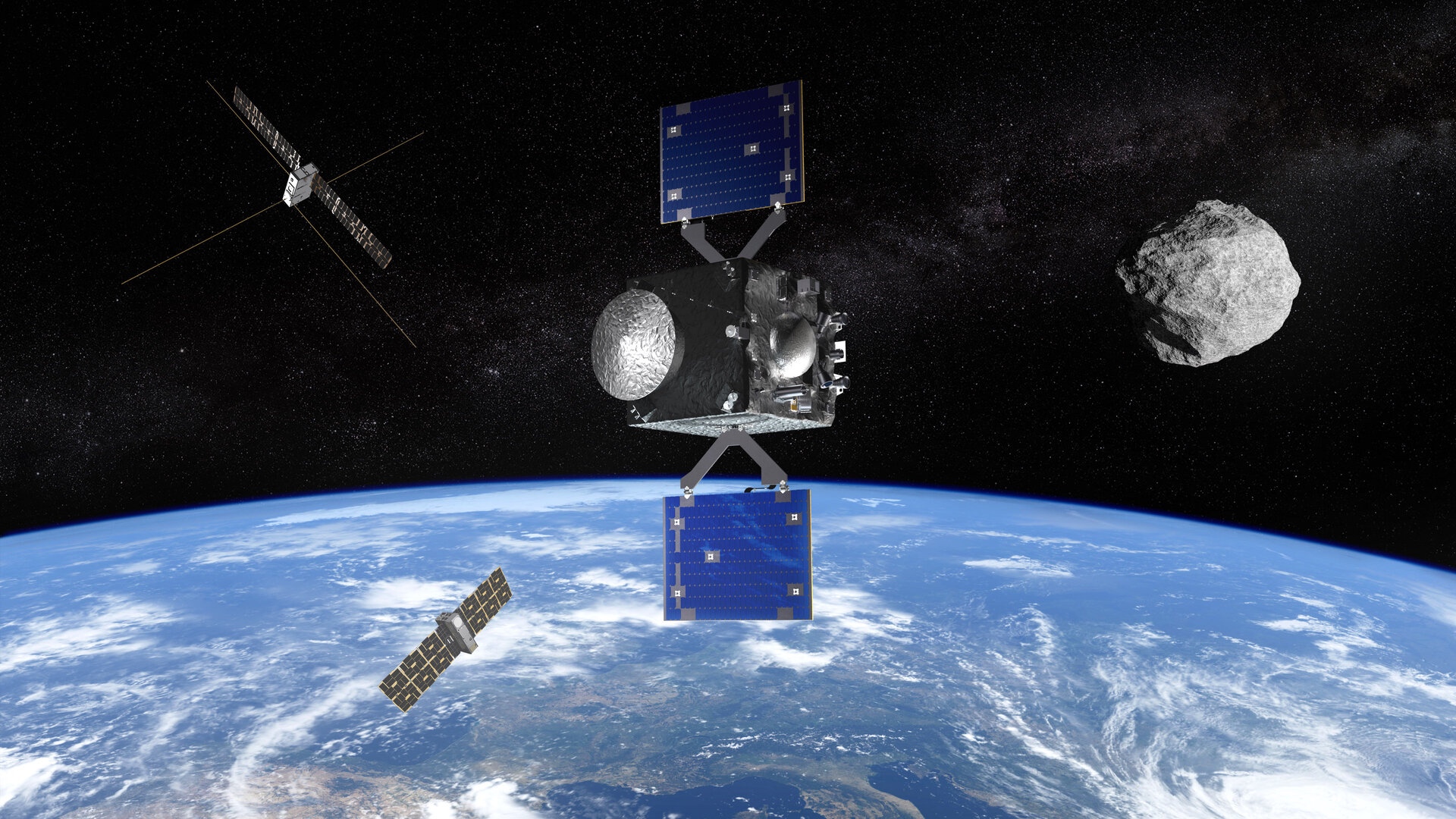BUSAN, South Korea — The European Space Agency will allow a proposed mission to the asteroid Apophis to proceed to a next stage of development to keep it on schedule even though it is not yet fully funded.
ESA announced July 16 that its space safety program, which includes planetary defense, has given the Ramses mission permission to begin preparatory work for the mission, which is designed to visit Apophis before that asteroid makes a very close flyby of Earth in April 2029.
Ramses, or Rapid Apophis Mission for Space Safety, would use the same spacecraft bus as ESA’s Hera mission, scheduled to launch this October to visit the asteroid Didymos, whose moon Dimorphos was the target of NASA’s DART mission to deflect its orbit. Ramses will carry two cubesats for additional studies of the asteroid.
Apophis is already the destination for one mission, NASA’s OSIRIS-APEX spacecraft, the main spacecraft used for the OSIRIS-REx asteroid sample return mission. OSIRIS-APEX will arrive at Apophis shortly after the flyby, but scientists are eager to study the asteroid before its close approach to see if the gravitational effects of the close flyby — Apophis will travel closer to the Earth than satellites in geostationary orbit — affect the asteroid.
“This is the first time that we can really observe, in its natural environment, an asteroid experiencing an external force and see how it reacts,” said Patrick Michel, science leader for Ramses at the French research agency CNRS, during a panel discussion at the Committee on Space Research (COSPAR) 45th Scientific Assembly here July 18.
“If we can have a spacecraft there prior to the close encounter to feed information to us, that would only help in terms of maximizing science return,” said Anjani Polit, deputy principal investigator for the OSIRIS-APEX mission, on the panel.
Ramses is designed to launch in April 2028 and arrive at Apophis in February 2029, studying the asteroid before and after its Earth flyby. ESA members will decide on funding Ramses at its next ministerial meeting in late 2025, but Michel said waiting until then would make it impossible to build and launch the spacecraft in time to arrive at Apophis before the flyby.
“Because we need to launch in April 2028, it was not possible to wait for the ministerial in 2025 to get the approval,” he said. “I thank the ESA delegations to already put in money to start the development of the mission so it can be later approved at the ministerial.”
ESA did not disclose how much funding it was providing now for Ramses, and Michel said that the figure had not been made public. It will be enough to get the mission through a preliminary design review (PDR) scheduled for this fall. “We can go through the development through the ministerial and, if everything goes well, I would be surprised if it is not approved” at the ministerial, he said.
The upcoming PDR, he said, is when the mission will consolidate the payloads that Ramses will fly. The Japanese space agency JAXA will provide an imager, with interest from NASA, India’s space agency ISRO and the new South Korean space agency KASA in participating as well.
The mission, which as an optional program of ESA requires contributions of member states, is working to line up those commitments. Michel said Italy is expected to be the largest contributor, with OHB Italia building the spacecraft. Germany will follow, along with Spain, Belgium and France, among others.
He said that ESA has ruled out another proposed Apophis mission, a 12U cubesat called Satis intended for rapid reconnaissance of near Earth asteroids. “In the case of Satis, we have to start from scratch, and in Europe starting from scratch means you need a decade of development,” he said. “Satis remains a great idea in general because, for planetary defense and fast reconnaissance, you cannot fly something like Hera or Ramses. Studies are going on, but not for Apophis.”
Related
Read the original article here
